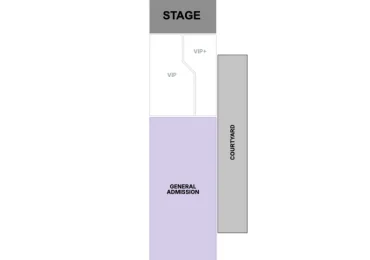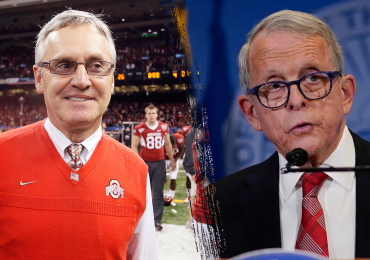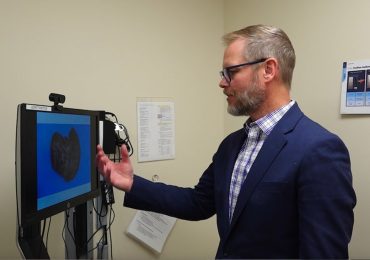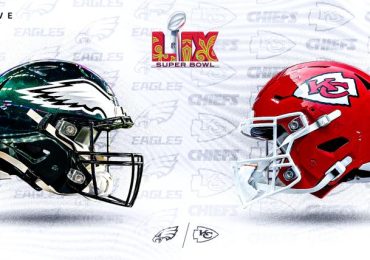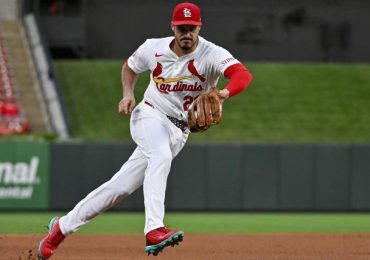“There are a lot of stories about A.J. People tell me, ‘you should write a book,’” said longtime A.J. Foyt Racing PR specialist Anne Fornoro while accepting the 2024 Robin Miller Award at IMS in May. “I say, ‘He pays me not to write a book.’”
But A.J. didn’t pay Art Garner not to write a book, and the long wait for an official A.J. biography will end when the first volume of ‘A.J. Foyt: Survivor, Champion, Legend’ is officially released on October 1 though Octane Press. The book is available now for pre-order, and here’s a taste of what’s inside:

There was very little of the traditional New Year optimism at the opening of 1935, the year A.J. Foyt was born. America was deep in the grip of the Depression and Europe was under the growing grip of Nazism. President Franklin D. Roosevelt was starting his third year in office and the “New Deal” was just beginning to be implemented. Lamar High School, one of several schools Foyt would pass through, was under construction thanks to federal dollars. Houston’s population had surged to more than three hundred thousand and there were so many cars on its roads that city center streets were starting to be paved, although not in the outlying Heights area.
From the very beginning his parents called him A.J.
“I’ve had A.J. as long as I can remember,” he says, but “I have no idea why.” A few people called him “Little Tony,” for a short time, although “junior” was never an option.
Tony Foyt had begun to pull away from the extended family following the death of his father, and soon after he married he left the Foyt Brothers Garage. It wasn’t long before the garage itself was gone.
“Louise finally said, ‘I had enough of this shit,’” Marie Foyt remembers her aunt saying after the drinking reached new levels. Frances agreed and the garage was sold.
Tony went to work maintaining the truck fleet for the Duncan Coffee Company — an offshoot of Maxwell House Coffee — and withdrew further from the family after the death of Barbara Jean. He continued to race at local tracks and acquired a small open-wheel, open-cockpit car known as a midget. He worked out of his own garage and repaired cars after hours to earn extra money. That’s where A.J.’s earliest memories were formed.
“I can remember Daddy taking me there when I was a little bitty kid,” he said. “I’d do anything, just to be with him. I was so little that he sat me up on the workbench and told me, ‘Just stay up there out of the way boy.’ He should have put me in the race car in the first place, because it’s where I always ended up.”
Shortly after A.J. turned three Tony gave him a bright red race car of his own. It was powered by a small Briggs & Stratton lawn mower engine like the one used for kid’s go-karts and minibikes for generations to come. Together they laid out a short racecourse around their house.
“I spent hour after hour running around the outside of the house in that race car,” A.J. recalled. “I was the best three-year-old racer in Houston. I learned that if I started it into a slide just at the swing set and drove it close to the corner of the house, I could go a lot faster down my straightaway at the side of the house.”
Another of the Foyt families, this one headed by Tony’s uncle and the oldest son, Joseph C. Foyt Jr., lived closest to A.J.’s house. Joe remained closer to Tony than anyone else in the family and he watched as A.J. ran lap after lap around the house in his go-kart.
 Five-year-old A.J. and Doc Cossey. Foyt Family Collection
Five-year-old A.J. and Doc Cossey. Foyt Family Collection
“My daddy always joked A.J. wasn’t right upstairs,” said Joseph R. Foyt Jr., the son of Joseph R. Foyt, one of the few Foyts Tony and A.J. remained friendly with. “He said A.J. would drive the go-kart around and around all day long. Tony did a lot of work on other people’s cars out of his garage and A.J. would siphon gas out of those cars to keep his go-kart running. Sometimes he’d get a mouthful of gas. My dad would say, ‘I think it screwed up his brain cells.’”
Once the home course was mastered, A.J. ventured away from his house and out onto the street, where he attracted the attention of neighbors and, before long, the police.
“It used to make a lot of noise,” Tony admitted. “Some of the neighbors would call the police. A.J. would see the police car comin’ and come flyin’ in the house and dive under the bed. We would pull him out, and the officer would make him promise not to speed anymore. But the urge would come back, and he would be out there again as fast as he could with that little engine poppin’ away.”
Life stabilized at the Foyt household, although it was tight quarters after Marlene was born on the day before A.J.’s fourth birthday. Tony and Evelyn were committed to providing the family atmosphere they’d never experienced.
Money was tight for nearly everyone and neighborhood kids would pool their pennies to buy an ice cream cone they could share. Occasionally on weekends Evelyn packed a picnic lunch and the family drove to the town of Kemah on Galveston Bay.
At times Foyt painted the Heights as a tough neighborhood. “You either learned to take care of yourself or you got the shit beat out of you,” he said in his autobiography. At other times he described it as a very normal place to grow up.
“The Heights was made up of small, mostly neat homes like ours, where middle-class people lived,” he said. “We had a two-bedroom frame bungalow and plenty of food and clean clothes to wear that were mostly new. It was a good childhood. Very American.”
Robert “Bobby” Waltrip was five years old when he moved to the Heights the same year A.J. was born. He grew up about a half mile away from the Foyts on Heights Boulevard and they later became close friends. He remembered the Heights as an “upscale and highly respectable place to live. Heights Boulevard was a wide street, lined picturesquely with trees and broad spans of grass.”
Christmas was the biggest day of the year in the Foyt household, and the family went all out on decorations.
“That was the day in the family,” A.J. said, a tradition he’d carry over to his own family. “My Momma and Daddy, that’s what they lived for. They decorated everything. On Christmas Eve my Daddy would sing Bohemian carols.”
 Three-year-old A.J. Foyt in his first race car. He already has his game face on. Foyt Family Collection
Three-year-old A.J. Foyt in his first race car. He already has his game face on. Foyt Family Collection
For entertainment Tony and Evelyn played Texas 42 with Marie and Joseph, a dominos game once called the “national game of Texas.” Evelyn also was part of a regular Friday night penny-ante poker game with the neighborhood ladies.
By the time A.J. was five, Tony built his son a replica midget, painted blue and white and carrying No. 8, just like the car known as the “Silver Bullet” that was driven by A.J.’s favorite driver, Doc Cossey. “Daring Doc” was the track champion at the Houston Speed Bowl where Tony often raced his yellow No. 20 midget. While most of the midgets used Ford or Offenhauser engines, the one in A.J.’s car put out just three horsepower.
“But it would go fifty miles an hour,” Tony said of his son’s car, “and he would go fifty in it.”
Often when Tony was at a track, A.J. made exhibition runs in his car between races, helping to keep fans entertained. Billed as “the world’s youngest race car driver,” he became a fan favorite, used to hearing the cheers of the crowd.
It was at this early age that Foyt picked up a chip on his shoulder, where it would remain for the rest of his life. Despite the exhibition runs—or perhaps because of them—he said he was constantly teased about his Daddy’s cars, which were often ragged in appearance and seldom ran up front. Tony had neither the money nor time to build a first-class racer, nor the driving talent to carry a car.
Many successful people, not just athletes, have a chip on their shoulder motivating them to greatness. Foyt made it clear in the first paragraph of his autobiography what drove him.
“If I heard, ‘Whatsamatter, kid, can’t your Daddy build race cars?’ once, I heard it a thousand times. If I had to pick one thing that made me a winner, that would be it.”
One night in 1940 at Buff Stadium, a quarter-mile dirt track in Houston where A.J. often made demonstration runs, he challenged Cossey to a race. Here’s how he recalled the conversation in his autobiography.
 With his “Daddy” and others at Tony’s garage. Foyt Family Collection
With his “Daddy” and others at Tony’s garage. Foyt Family Collection
I walked up to him in the pits and said, “Doc, I can outrun that midget of yours.”
“Sure kid,” Doc said and went right back to the story he was telling a couple of other race drivers.
“I mean it, Doc. I can beat you.” I wasn’t going to give up.
“Are you serious, kid?” he said, knowing damn well I was. “Just hold on.”
He finished his story and went over to Daddy. “Tony, is this kid serious? Do you want to let him race me?”
Racers can’t stand to be challenged, not even by a kid. Daddy didn’t know a thing about it, but I can remember him laughing like hell. “What’d he say?” he asked Doc.
“He said he could outrun me,” Doc said.
“Well, he probably can,” Daddy said. That’s all it took.
Tony backed up his son. When the track manager got wind of the challenge, he realized the promotional value of a match race and hyped the event. The good-looking Cossey, with a thin Clark Gable mustache, was also a fan favorite. While most drivers competed in a grimy T-shirt and pants, Cossey adopted a style worn by drivers in Southern California—flashy silk shirts and crisp white pants, a flair A.J. would later emulate.
A photo of the pair before the race shows Cossey with an uneasy smile, not sure what to make of the situation. Foyt called it an “I’ll take it easy on you, kid,” grin. A.J. has his game face on, a look of determination other racers would see for decades to come.
 The Foyt Brothers Garage. That’s believed to be A.J.’s grandfather, Thomas Foyt (far left) with his hands on his hips. Foyt Family Collection
The Foyt Brothers Garage. That’s believed to be A.J.’s grandfather, Thomas Foyt (far left) with his hands on his hips. Foyt Family Collection
“Doc was still grinning when the man dropped the flag,” is how Foyt remembers it. “Goodbye Doc. I got the jump on him and beat him into the first corner. I threw the midget sideways and I could hear the crowd cheering.”
His first race may also have been the start of the mythology and legend that is A.J. Foyt. Cossey said years later he didn’t recall much about the race and if Foyt won, implied he must have let the kid finish first.
“I don’t remember if he beat me or not,” he said. “I can remember that I had a lot of trouble slowing down and letting him catch up to me. You couldn’t run those (midgets) at slow speeds, and I had to keep slowing down and speeding up for him. It was just one of those exhibition races between races.”
Not surprisingly, Foyt felt differently. “Doc and I knew damn well that he didn’t let me win.” Even more importantly, “Daddy knew it.”
It can be debated whether Cossey, who’d go on to win the Texas/Oklahoma midget championship in 1941 and remain one of the region’s top drivers well into the 1950s, let A.J. win. One thing is not debatable: it’s when Foyt decided he wanted to be a race car driver.
“If ever a kid knew that he had chosen the right profession for himself, I knew it at that moment. The feeling of that car sliding — the sort of bubble-in-your-stomach feeling — was one I’ll never forget. That and knowing that I could stop the slide anytime I wanted — the power that I had to control the car — beat anything I had ever felt.”
Tony said nothing afterward, no words of encouragement or congratulation. It was an era of tough love, long before participation trophies were handed out like candy on Halloween. His daddy’s reaction was A.J.’s first indication that victory was expected, excellence assumed. At the same time, they were now a team, A.J. seldom leaving Tony’s side.
With success at the racetrack came problems at school. The potential was there but not the interest. He was going to be a race car driver and didn’t see anything in class that would help him reach that goal.
He’d do anything to avoid going to school. On one trip to Helms Elementary he broke free from his mother and jumped in a mud puddle, forcing her to take him home. Tony wasn’t having any of that, cleaning him up and putting a girl’s dress on him and taking him back to school. That didn’t always work either.
“My father said Tony would take A.J. to school and before Tony got home, A.J. would be in the front yard playing,” says cousin Joe Foyt. “He said Tony would beat that boy, trying to keep him in class, but he just wouldn’t stay in school.”



